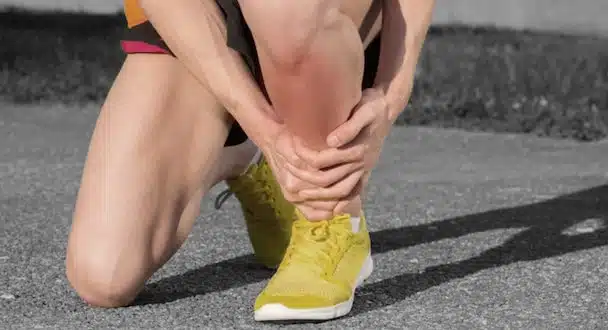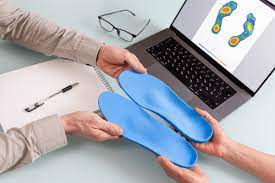8 Common Running Injuries
Running is a great form of exercise that helps burn calories, strengthen muscles and bones, and improve cardiovascular fitness. Being that you only need a pair of running shoes and an open path, makes it very accessible, which is an added bonus. On the other hand, running also generates a lot of biomechanical stresses on the lower limb and that can potentially combine to result in injuries. Here are 8 common injuries that may occur with running.
IT Band Syndrome
Also known as Runner’s Knee or Cyclist’s Knee, IT Band Syndrome is the most common cause of lateral (outer) knee pain in runners. It is caused by excessive friction between the iliotibial band and the end of the femoral bone where the knee is located, resulting in tightness, irritation, and inflammation when the knee is bent. Pain usually occurs a few kilometers into the run and is typically worse with downhill running.
You are more likely to develop IT band syndrome if you have bowed legs, your foot overpronates, you have a tight IT band, or you have changed the intensity or frequency of your training.
Shin Splints
Shin splints, medically known as medial tibial stress syndrome, is described as pain at the inner portion of the shin bone. It is caused by repetitive microtrauma to the bone and/or surrounding soft tissues.
Athletes who do not build up their mileage gradually or abruptly change their workout regime by increasing intensity or changing from a flat road to hills are more likely to experience shin splints. It is also associated with weak muscles, improper footwear, and a hypermobile, pronated foot type.
 Plantar Fasciitis
Plantar Fasciitis
Plantar fasciitis is one of the most common causes of heel pain and it is caused by inflammation of the fibrous band that runs from the heel bone to the ball of the foot. The tell-tale sign of plantar fasciitis is heel pain that is worst with the first steps in the morning out of bed. Pain also occurs with initial steps after sitting or rest.
Running puts a great deal of stress on the heel bone and strain on the plantar fascia as the arch of the foot depresses 50% more relative to walking. Overpronators, as well as increased body weight, puts you at higher risk of developing plantar fasciitis.
Achilles Tendinopathies
Achilles tendonitis is an overuse injury of the Achilles tendon, which is a tendon that connects the calf muscle to the back of the heel bone. Repetitive strain and stress to the tendon or tissue encapsulating the tendon can result in irritation and therefore, inflammation. Pain may be along the tendon or closer to the heel bone and worsens with increased activity (ie after a run). Pain or stiffness may also be experienced in the mornings. Chronic inflammation may lead to thickening of the tendon and decreased flexibility of the ankle. Tight calf muscles, a sudden increase in running mileage, overpronation, and having bone spurs can all cause Achilles tendonitis.
Ankle Sprains
The most common ankle sprain is an inversion ankle sprain, specifically at the anterior talofibular ligament (ATFL). It occurs when you “roll” your ankle inwards and the ligament is stretched or torn causing pain and swelling. The more severe the sprain, the longer the recovery.
Ankle sprain treatment requires PRICE (Protection, Rest, Ice, Compression, Elevation) for the first three days. Minor ankle sprains will then move onto range of motion exercises and then strengthening exercises. For more severe injuries, splints or immobilization is necessary before rehabilitation commences. You may be more likely to sprain your ankle if you have a varus deformity of the lower limb and foot, you have a hypermobile foot, you train on uneven terrain, or you have a history of ankle sprains. Improper footwear, as well as participation in sports that require dynamic foot movements, can also predispose you to ankle sprains.
Patellofemoral Pain Syndrome
Patellofemoral pain syndrome, also known as Runner’s knee results from overuse and overload of the patellofemoral joint resulting in an “achy” pain at the front of the knee and around the knee cap. Pain is worse with activity and worsens with downhill running, running on an uneven surface, or prolonged sitting.
Having a high arched foot, knock-knees, muscular imbalance such as weak quads and tight hamstrings, or an overpronated foot, all predisposes you to developing patellofemoral pain syndrome.
Anterior Compartment Syndrome
Compartment syndrome, specifically chronic or exertional compartment syndrome occurs when pressure builds up at the front of the lower leg as the muscle expands in volume during exercise but the tissue encasing the muscle does not. This results in a deep aching pain, tightness, and swelling. It can also lead to reduced circulation and sensation resulting in numbness, tingling, muscle weakness, and in severe cases, foot drop. Exertional compartment syndrome is caused by regular vigorous exercise and overtraining. It is initiated by activity and ceases with rest.
 Subungual Hematoma
Subungual Hematoma
A subungual hematoma is the medical term for bruising and bleeding under the toenail caused by trauma. With running, bruising usually occurs from the toe repetitively hitting the end of the shoe. Wearing properly fitted footwear will decrease your chances of developing a subungual hematoma. Silicone toe caps may also help.
If you are experiencing one or all of the injuries discussed above, incorporating a chiropodist in your circle of care may be of great benefit. Have your feet assessed today to determine if they may be a contributing factor to your pain.
For All Your Foot Concerns, We Can Help!
We have all your solution under one roof. Call or Book Today and we’ll have you in asap! Open 6 days a week, we’ll be happy to help inform you and solve all your concerns any day at your convenience!
Call us at 416-769-3338 or Book Your Assessment Today!

 Plantar Fasciitis
Plantar Fasciitis
 Subungual Hematoma
Subungual Hematoma








